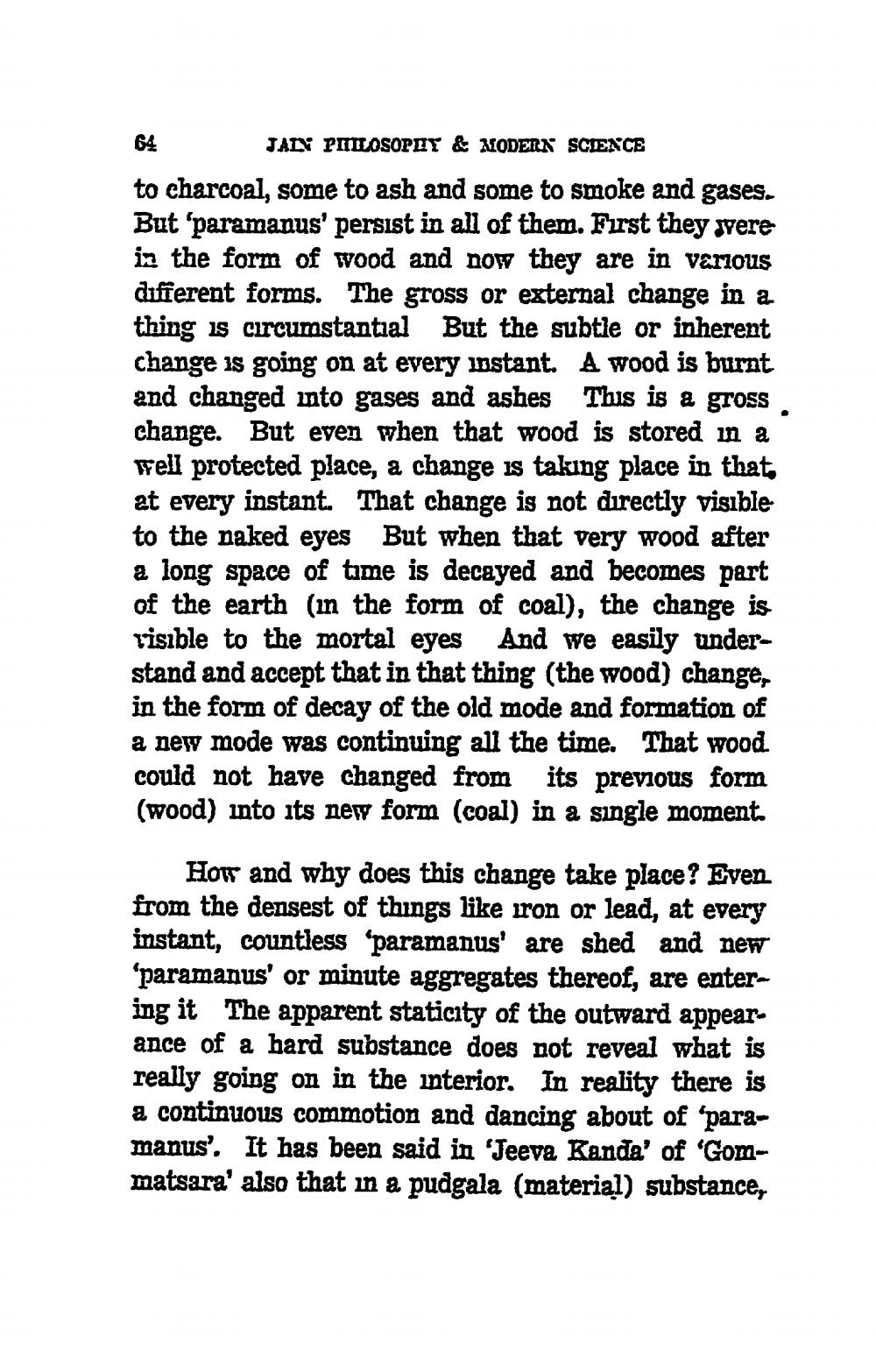________________
JAIN PHILOSOPHY & ALODERX SCIENCE to charcoal, some to ash and some to smoke and gases. But 'paramanus' persist in all of them. First they were in the form of wood and now they are in various different forms. The gross or external change in a thing is circumstantial But the subtle or inherent change is going on at every instant. A wood is burnt and changed into gases and ashes This is a gross change. But even when that wood is stored in a Tell protected place, à change is taking place in that at every instant. That change is not directly visible to the naked eyes But when that very wood after a long space of time is decayed and becomes part of the earth (in the form of coal), the change is risible to the mortal eyes And we easily understand and accept that in that thing (the wood) change, in the form of decay of the old mode and formation of a new mode was continuing all the time. That wood could not have changed from its previous form (wood) into its new form (coal) in a single moment.
Hot and why does this change take place? Even from the densest of things like iron or lead, at every instant, countless ‘paramanus' are shed and new 'paramanus' or minute aggregates thereof, are entering it The apparent staticity of the outward appear. ance of a hard substance does not reveal what is really going on in the interior. In reality there is a continuous commotion and dancing about of 'paramanus'. It has been said in 'Jeeva Kanda' of 'Gommatsara' also that in a pudgala (material) substance,




